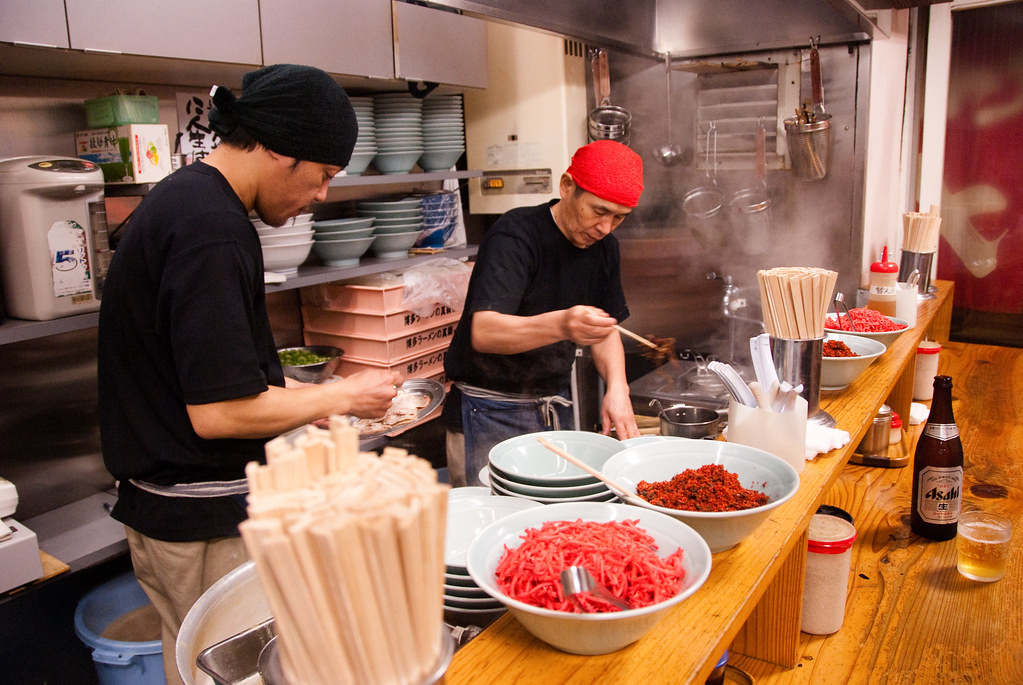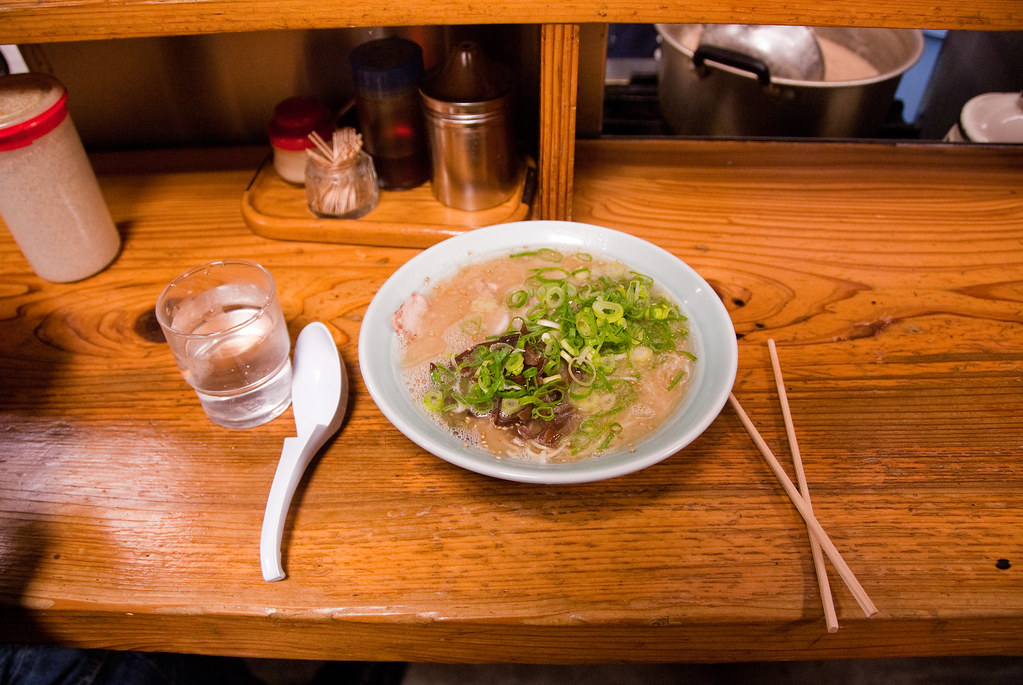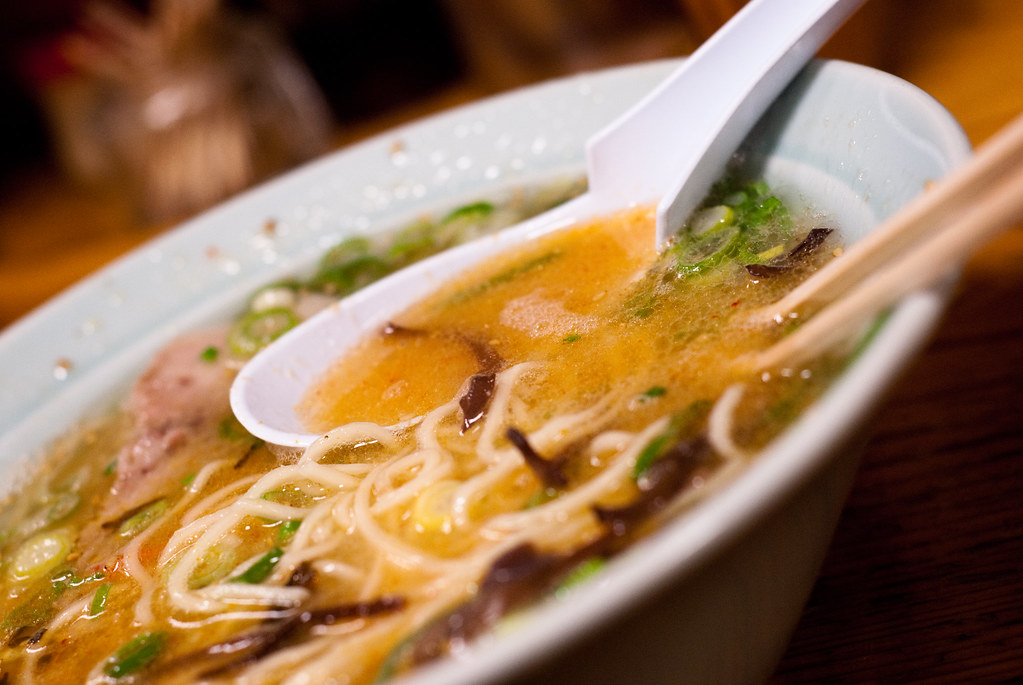I've been processing some more of my pics from Japan.
The first thing Jiksu and I did after getting off the ferry from Pusan to Fukuoka was get lost in the night trying to find our inn. I started to get the same weary feeling I had on the night I first set foot on mainland China, when Joe and I wandered the shady streets of Shenzhen until 3 in the morning looking for a spa to spend the night.
But we quickly learned that Japanese are extremely polite, patient, and willing to help, even if they don't speak a word of English. In our case, a middle-aged woman spent nearly a full minute intently studying our map, looking around at our surroundings, before exclaiming "Ahh!", smiling at us, and walking us all the way to our ryokan.
The second thing we did was head out into the night in search of a ramen shop. This proved to be about as difficult as finding a coffee shop in Seattle. We ducked into the first one we came across:
Just a month earlier, I had come across a feature article in the New York Times about ramen, and Japan's devotion to it:
[Ramen blogs] constitute but one small corner of Tokyo’s sprawling ramen ecosystem, a realm that encompasses multilingual guidebooks, glossy magazines, databases that score shops to three decimal places (Ganko’s underrated by RamenDB.com at 76.083), comic books, TV shows, movies (like the 1985 classic “Tampopo,” in which a Stetson-wearing trucker helps a beleaguered widow learn the art of ramen) and, according to the Shinyokohama Raumen Museum (yes, there is a ramen museum), the 4,137 shops selling bowls of noodles in broth.Lucky for us, Fukuoka is known throughout Japan for its Hakata-style ramen, which features the pork-bone tonkotsu broth found on the southern island of Kyushu.
Still unclear? Well, combine New Yorkers’ love of pizza, hot dogs and hamburgers, throw in some Southern barbecue mania, and you’ve still only begun to approximate Tokyo’s obsession with ramen.
This ramen is definitely not the dried stuff you subsisted on in college. At the best shops, and even at lesser lights, almost everything is fresh, handmade and artisanal, from long-simmered broths and hand-cut noodles to pigs raised on red wine (for an inside-out marinade). In some quarters, regional varieties predominate...

I had, of course, eaten my fair share of instant ramen in college. I started with the Maruchan packs, which I would make in a hot pot I snuck into the dorms freshman year. When I moved to the Cities and had regular access to Asian markets, I moved up to spicy Korean shin ramyeon, usually adding in some kimchi, mandu dumplings, an egg, and a Kraft single--as it's served at the ubiquitous kimbap snack shops in Korea. I certainly kept this habit up upon moving to Seoul, where, if one is really lazy, it's possible to have a bowl delivered to your apartment within 15 minutes for $4. And I made a point of watching Tampopo--the so-called "noodle western" which features parallel parodies of Western and Yakuza gunslingers with an appreciation for ramen and other fine food--as part of my research and preparation before coming to Japan. It opens with a sketch in which a sensei demonstrates the proper way to eat ramen:
But none of that prepared me for how amazing this bowl of ramen was. I tried to remember the order of the steps given in Tampopo but gave up in the face of such deliciousness, instead redirecting my efforts to remembering to slurp the broth (the failure to do so, Lonely Planet informed me, could be taken as disrespect to the chef). I finished the noodles with the last piece of pork and downed the rest of the broth. We left our empty bowls on the counter, paid up, and walked back out into the night, looking for a bar.

My blog / RSS feed
My Flickr photostream / RSS feed
My Flickr map
0 comments:
Post a Comment